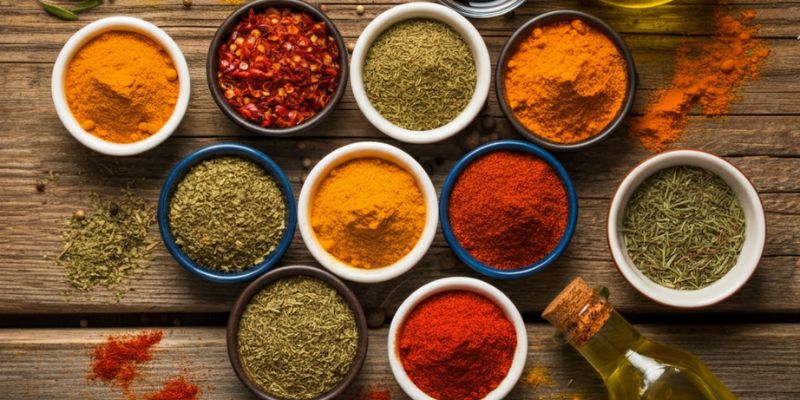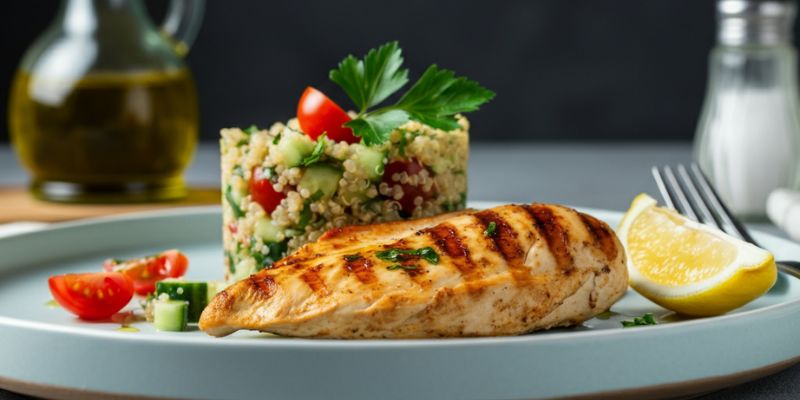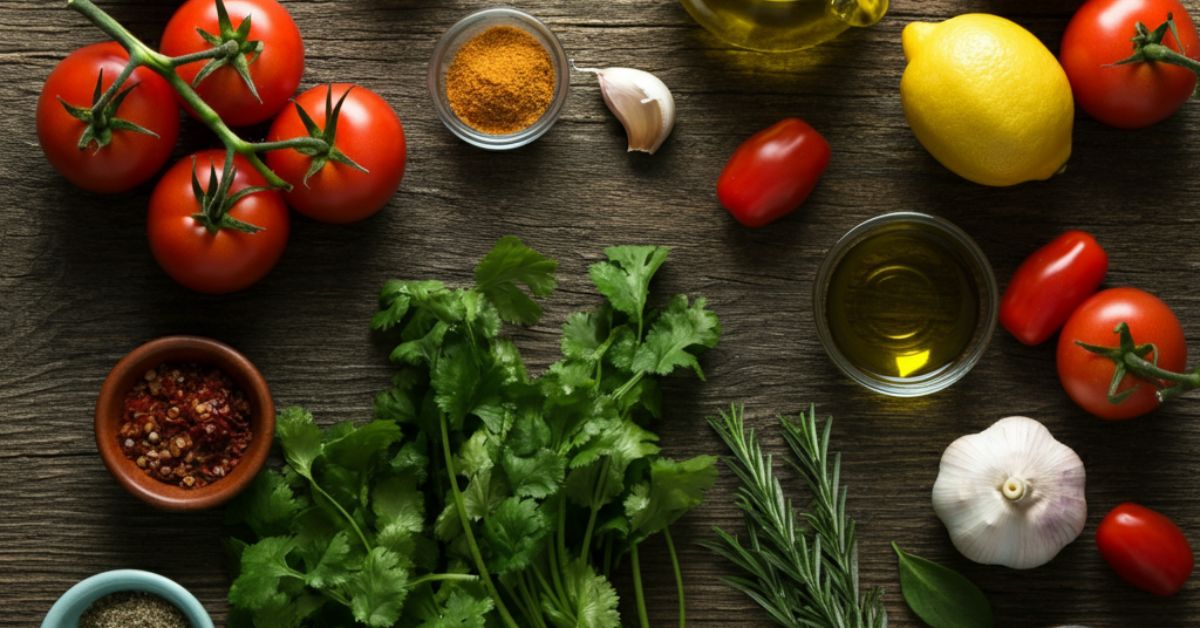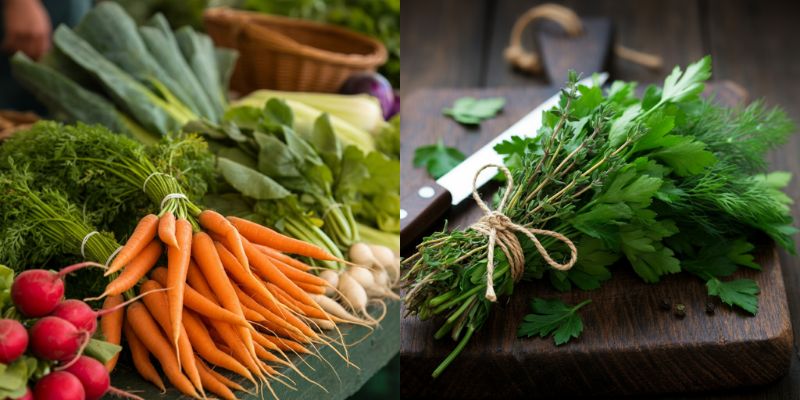What if I told you that 80% of a dish’s success comes down to one Cooking Ingredients? Not the cooking method, not the recipe—just the quality of the ingredients themselves. Whether you’re searing a steak, assembling a salad, or crafting the perfect pasta sauce, ingredients are the silent heroes of every culinary triumph. Yet, understanding them—how to choose, store, and use them effectively—is often overlooked.
Imagine biting into a tomato so fresh it reminds you why simplicity is king, or transforming humble pantry staples into a feast-worthy dish. That’s the magic you unlock when you master your ingredients, and it goes far beyond flavor. It’s about efficiency, reducing waste, and elevating everyday meals to gourmet status.
This isn’t just a beginner’s guide. It’s a roadmap to Cooking Ingredients expertise. From selecting seasonal produce to finding the perfect cut of meat or stocking a pantry that never lets you down, this article gives you everything you need to take your cooking to the next level. Get ready to turn Cooking Ingredients into extraordinary meals—starting now!
1. Fresh Cooking Ingredients: The Foundation of Flavor
Fresh Cooking Ingredients are the building blocks of vibrant and dynamic dishes. From juicy fruits to fragrant herbs and leafy greens, they add color, nutrients, and natural flavors that elevate any meal. But to truly use them well, you need to select and store them properly while understanding their unique culinary applications.
How to Choose the Best Fresh Cooking Ingredients
Fruits: Nature’s Sweetness
Fruits are nature’s candy, offering sweetness and acidity that can transform both savory and sweet dishes.
- Look for ripeness: Stone fruits like peaches, plums, and apricots should feel plump and slightly soft to the touch. Berries, like raspberries and strawberries, should be firm but juicy, with vibrant colors and no mushy spots.
- Seasonal standout: Citrus fruits, like lemons, oranges, and limes, are most flavorful during the winter months and are essential for adding brightness to dishes, marinades, and desserts.
- Culinary uses:
- Add fresh fruits like mango, pineapple, or citrus to salads for a burst of sweetness.
- Bake apples or pears with cinnamon for a warming dessert.
- Use ripe avocados in guacamole or as a creamy spread in sandwiches.
Vegetables: The Heart of Every Meal
Vegetables provide the heartiness, crunch, and depth that balance meals.
- Firmness and weight: Potatoes, squash, and eggplants should feel heavy for their size and blemish-free.
- Leaves and stems matter: Vegetables like beets and radishes should have crisp, green tops; these leafy greens are also edible and nutrient-packed.
- Culinary uses:
- Sauté leafy greens like spinach or kale with garlic for a quick side dish.
- Roast root vegetables like carrots, parsnips, or sweet potatoes to caramelize their natural sugars.
- Use fresh tomatoes for homemade sauces or toss them raw into summer salads.
Herbs: Small but Mighty
Herbs are small but mighty—they can completely transform a dish with their fresh flavor and aroma.
- Go beyond basics: Though parsley, cilantro, and basil are household staples, experiment with lesser-used varieties like tarragon, dill, or even caper leaves.
- Flowering herbs: Edible flowers like chive blossoms or borage can elevate your dishes and make them look stunning.
- Culinary uses:
- Chop fresh cilantro to garnish tacos or rice dishes.
- Infuse mint into teas, cocktails, or desserts.
- Use rosemary or thyme to enhance the flavor of roasted meats and vegetables.
Proper Storage Tips for Maximum Freshness
- Fruits: Keep tropical fruits at room temperature, and only refrigerate them once they’ve ripened. Berries last longer if washed in a vinegar-water solution before storing.
- Vegetables: Wrap celery or cucumber in aluminum foil to keep them crisp for weeks. Store mushrooms in a paper bag to absorb excess moisture.
- Herbs: Keep herbs like parsley and cilantro fresh by storing them upright in a glass of water like a bouquet, covering the tops loosely with a plastic bag, and refrigerating them.
Eating Seasonally: The Ultimate Cooking Ingredients
Elevate your meals by eating what’s in season. Seasonal foods are fresher, tastier, and often more affordable.
- Spring: Radishes, artichokes, and tender asparagus shine bright in salads or light sautés.
- Summer: Tomatoes, corn, and zucchini are perfect for grilling or stewing into ratatouille.
- Fall: Use earthy squash and mushrooms in comforting soups or roasts.
- Winter: Citrus fruits and hearty greens like collards and swiss chard take center stage in colder months.
2. Meat, Poultry, and Seafood: The Protein Powerhouses
Protein is the backbone of countless dishes, whether it’s a slow-roasted brisket, crispy-skinned salmon, or tender roasted chicken. The trick lies in selecting the finest cuts, proper preparation techniques, and understanding how each fits into a dish.

How to Choose Quality Proteins
Meat: The Right Cut Makes All the Difference
Different cuts bring different qualities to the table. Selecting the right one for your dish is crucial.
- Know your cuts: For beef, choose chuck or brisket for slow cooking, while steaks like ribeye excel on the grill. Pork loin roasts beautifully in the oven, whereas pork shoulder shines in slow-cooked dishes like pulled pork.
- Buy local when possible: Meat from local butchers often comes with better quality control and less processing.
Poultry: Whole vs. Portioned
- Whole vs. portioned: A whole chicken is cost-effective and can be roasted for crisp skin and juicy meat, while pre-cut portions offer convenience for weekday meals.
- Free-range and organic: These options usually taste better and come from animals raised in healthier environments.
Seafood: Freshness is Key
- Shellfish safety: For clams, mussels, and oysters, ensure shells are tightly shut before cooking and open after; discard any that don’t.
- Fatty fish vs. lean fish: Salmon, mackerel, and sardines are rich in healthy omega-3s and work well grilled or roasted. Cod, haddock, and tilapia are lean and delicate, making them perfect for frying or baking.
Preparation Techniques for Perfect Proteins
Meat: Braising and Grilling
- Bracing: Perfect for tougher cuts like beef chuck, braising involves slow cooking in liquid. Coq au Vin or pot roast are classic examples.
- Grilling tips: Always preheat the grill, and use marinades that include an acidic element like vinegar to tenderize the meat.
Poultry: Spatchcocking and Crispy Skin
- Spatchcocking: Flattening a whole bird by removing its backbone allows for even cooking. It’s ideal for roasting or grilling.
- Crispy skin technique: Pat chicken dry before seasoning and cooking at high heat to achieve golden, crackling skin.
Seafood: Poaching and Searing
- Poaching: Cooking fish gently in flavored liquids like broth or white wine enhances delicate flavors.
- Seared scallops: Cook with high heat in a non-stick pan for caramelized edges; serve with lemon butter for maximum flavor.
Proper Storage for Long-Lasting Freshness
- Wrap proteins tightly in butcher paper or airtight bags to prevent freezer burn.
- Thaw frozen proteins gradually in the refrigerator—rushing it by soaking in water can compromise texture.
3. Dry Goods and Pantry Staples: The Unsung Heroes
Pantry items like grains, beans, and flours are the unsung heroes of countless recipes. They’re affordable, long-lasting, and endlessly versatile. Adding a wide range of spices, oils, and specialty goods can transform your pantry into a treasure trove.

Cooking Ingredients Dry Goods to Always Have on Hand
Rice and Grains: The Versatile Base
- Types of rice: Long-grain basmati is ideal for pilafs; sticky jasmine rice works for Asian dishes, while arborio is perfect for creamy risottos.
- Alternative grains: Farro, freekeh, and bulgur wheat add distinct nutty flavors and textures.
Beans and Lentils: The Protein-Packed Staples
- Versatile uses:
- Black beans are perfect for chili or burrito bowls.
- Red lentils create creamy soups or vegetarian curries.
- Chickpeas are the foundation for hummus, stews, and roasted snacks.
Flours and Baking Staples: The Backbone of Baking
- Beyond all-purpose flour: Almond flour adds moisture to cakes, and bread flour provides elasticity for chewy bread textures.
- Baking must-haves: Keep baking powder, yeast, and cocoa powder stocked for impromptu desserts.
Spices, Oils, and Flavorings: The Cooking Ingredients for Global Cuisines
Spices are the backbone of global cuisines. Adding dried herbs, exotic spices, and infused oils can change your cooking game entirely.
- Spices to stock: Cumin, coriander, smoked paprika, turmeric, Black Pepper and chili flakes add depth to everyday meals.
- Infused oils and vinegars: Garlic oil, basil-infused olive oil, or balsamic vinegar can finish dishes with elegance.
Storage Tips for Longevity
- Keep grains and flours in airtight containers to protect them from moisture and pests.
- Spices should remain in cool, dark places to maintain potency.
Maximizing Versatility in Dry Goods
- Use barley or quinoa as the base for grain bowls.
- Add lentils to soups or stews to make them heartier.
- Entire meals can come together with just dry pasta, garlic, olive oil, and Parmesan cheese.
4. Combining Cooking Ingredients for Flavorful Meals
Understanding how to balance flavors is the hallmark of a great cook. Every dish involves a delicate dance between five primary tastes—sweet, salty, sour, bitter, and umami (savory).
Flavor Pairing Basics
- Sweet and sour: Pair sweet fruits like mangoes with tangy dressings for harmonious contrasts.
- Herbs and acids: Finish roasted vegetables with a squeeze of fresh lemon and a sprinkle of dill to brighten earthy flavors.
- Savory and spicy: Add cayenne pepper to a rich tomato sauce for a subtle kick.
Layering Flavors for Depth
- Start by sautéing aromatic ingredients like garlic and onions to build depth in soups and sauces.
- Use multiple complementary spices—curry powder, garam masala, and fresh cilantro bring together Indian-inspired stews.
- Balance everything with a pop of acid (lemon, vinegar) or fresh herbs just before serving to round out the dish.
Experimenting With New Cooking Ingredients
When branching out, keep an open mind. Score small amounts of unfamiliar items from international markets. Play with ingredients like gochujang (a sweet Korean chili paste), za’atar (a Middle Eastern spice blend), or black garlic.

Final Thoughts: Mastering the Cooking Ingredients
Understanding your Cooking Ingredients is like having a superpower in the kitchen. When you know how to choose the best produce, confidently prepare proteins, and stock a versatile pantry, you create endless possibilities for meals that impress.
With these tips and techniques, it’s time to make your Cooking Ingredients shine. Explore your local markets, experiment with pairings, and don’t be afraid to make mistakes—innovation often stems from happy accidents.
Cooking is an adventure. And with the right essential ingredient, every dish becomes a triumph. Have fun, and happy cooking!
Stay connected with us!
- Follow us on Instagram: @RoastedKitchen25 for daily cooking inspiration.
- Subscribe to our newsletter for exclusive recipes, expert tips, and kitchen hacks straight to your inbox!
FAQ Section on Cooking Ingredients
1. What are the essential cooking ingredients every kitchen should have?
Having a well-stocked kitchen makes cooking easier and more enjoyable. Essentials include salt, pepper, olive oil, garlic, onions, flour, sugar, eggs, rice, and a variety of dried herbs and spices like oregano, basil, and paprika.
2. How do I choose the freshest cooking ingredients?
To choose fresh cooking ingredients, look for vibrant colors, firm textures, and pleasant smells. For produce, avoid items with bruises or soft spots. When selecting meat or seafood, ensure they’re stored properly and smell fresh, not sour or fishy.
3. Can I substitute cooking ingredients if I don’t have what a recipe calls for?
Absolutely! Many cooking ingredients have substitutes. For instance, use yogurt instead of sour cream or applesauce in place of eggs for baking. Keep a list of common substitutes handy to adapt recipes creatively when needed.
4. How should I properly store cooking ingredients to keep them fresh longer?
Store dry goods like grains and flours in airtight containers to keep out moisture and pests. Refrigerate perishable items like dairy and fresh produce, while herbs can be stored in damp paper towels to maintain freshness of cooking ingredients. Label and date ingredients to track their shelf life.
5. What’s the best way to enhance flavors with simple cooking ingredients?
Start with seasoning basics like salt and pepper, and build flavors by adding garlic, onion, or citrus. Experiment with fresh herbs or a splash of vinegar to brighten dishes. Always taste as you cook to adjust seasoning levels with cooking ingredients.

Food has been at the heart of my life since childhood. My father, a passionate restaurateur, owned and ran Cave Way, a beloved restaurant in Narayanganj, Bangladesh. For 19 wonderful years, Cave Way delighted customers with its warm atmosphere and mouthwatering dishes. It was more than a restaurant; it was a community landmark. When my father passed away, the restaurant’s doors closed, but its legacy lived on in me. As a businessman and food enthusiast, I’ve always felt a connection to the joy and stories that food brings into our lives. Roasted Kitchen is my way of honoring that legacy, sharing my passion, and connecting with others who love cooking as much as I do.











 Subscribe to our free newsletter for tips, tutorials, and insights!
Subscribe to our free newsletter for tips, tutorials, and insights!